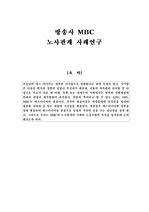

PARTNER
검증된 파트너 제휴사 자료
1980-90년대 한국 생활미술운동 연구 (A Study on Korean Living Arts Movement in the 1980s and 1990s)
한국학술지에서 제공하는 국내 최고 수준의 학술 데이터베이스를 통해 다양한 논문과 학술지 정보를 만나보세요.
11 페이지
최초등록일 2025.03.28
최종저작일
2015.12

-
미리보기
서지정보
· 발행기관 : 한국디자인문화학회
· 수록지 정보 : 한국디자인문화학회지 / 21권 / 4호 / 369 ~ 379페이지
· 저자명 : 안영주
초록
‘생활미술운동’은 1980-90년대에 한국에서 전개되었던 민중미술운동의 한 흐름으로써 순수 예술이 아닌공예나 디자인의 영역에서 일어났던 생활화 운동이다.
그러나 생활미술운동은 민중미술운동에 비해 지금까지 우리에게 잘 알려지지 않은 채 간과되었던 분야라할 수 있다. 본 논문은 생활미술운동을 공예와 디자인을 통해 사회의 변화를 이루고자 했던 활동으로 바라보고, 1980-90년대 한국 문화의 맥락 안에서 그 개념과 전개 과정, 특징 등을 살펴봄으로써 한국에서의 사회적 디자인 및 공예 운동의 작은 역사로 소개하려는데 목적이 있다.
따라서 연구의 범위를 1980-90년대라는 시간적 범위와 민중 미술이라는 범주 내에서 발생한 생활미술운동으로 제한하고자 한다. 또한, 생활미술운동에 대한 선행 연구가 미비한 관계로 <미술 세계>와 <미술공예>, <월간 디자인> 등에 소개된 내용을 1차 자료로 검토하고, 일간지에 소개된 생활미술운동에 대한내용을 조사하였다. 더불어 당시 생활미술 운동에 참여했던 김남수와 디자인 평론가 최범, ‘두렁’의 동인이었던 라원식을 인터뷰하고 녹취록을 정리하여 연구에반영하였다.
본론에서는 먼저, 생활미술운동의 개념을 살펴보고, 생활미술운동을 세 시기로 구분하여 그 전개과정을 살펴보았다. 첫 번째 시기(1980년대 초⋅중반)는 민중미술의 전투적이고 선동적 기능을 가진 선전광고물들이제작되었으며, 이 시기의 작업들은 민중 미술에 등장하는 도상이나 상징들을 그대로 사용한 것들이다. 두번째 시기(1987-1990년대 초)의 생활미술운동은 1987 년 이후 정치적 상황이 일단락되고 운동권 중심의 수요가 감소함에 따라 보다 대중적 유통을 모색했던 시기였다. 생활미술운동 작가들은 ‘생활미술열린장터전’ 등을 기획하고 그것을 통해 대중과의 교감은 물론, 공예⋅디자인 작가들이 설 자리를 마련하였다. 세 번째시기(1990년대 중반 이후)는 생활미술운동의 쇠퇴기로, 1990년대를 상징하는 ‘신세대’ 문화의 등장은 민중 문화에 대한 관심을 저하시켰으며, 1995년 ‘그림마당 민’ 의 폐업으로 생활미술운동은 집단적 실천의 장을 잃게되면서 점차 개별화되는 상황을 맞이하게 된다.
연구 결과 생활미술운동은 서민 대중의 생활 속에서 전통과 민족의 의미를 되찾고 아울러 공예의 위상을 생활 속에서 찾고자 한 움직임이었으며, 전통공예가 붕괴된 이후 현대 공예가 추구해 왔던 일품공예적경향에 반(反)하여 대중 공예를 지향했던 자생적 운동이라는 점에서 의의를 찾을 수 있었다. 그러나 생활미술운동은 시대의 변화 속에서 실재하는 현재의 경험을 삶의 구조로 해석해내지 못하고 도식적인 전통적조형언어에 머물러 있었으며 그러한 한계로 인해 쇠퇴의 일로를 걷게 되었다.영어초록
As one trend of the public art movement developed in the 1980s and 1990s in Korea, ‘Living Arts Movement’ was to practice art in everyday life in areas of craft or design, instead of fine arts. However, it has not been widely known compared to the public art movement.
With the Living Arts Movement presented as an activity to achieve social change through craft and design, this article intends to introduce aspects of Korean craft and design by examining its concept, development process, characteristics, etc.
Therefore, I would like to limit the scope of research into Living Arts Movement that occurred within the time range of 1980-90's and Minjung Art categories. In addition, The previous study for Living Arts Movement is incomplete, so I reviewed and researched the contents in <Art World>, <Arts & Crafts>, <Design> to the primary source. And Living Arts Movement featured in newspapers, the contents were examined for the exercise. In addition, I interviewed with Kim, nam-soo involved in the movement at that time and design critic Choe, beom, La, won-sik took part in 'Dureong'. Then I reflect the record data on the study.
I, the researcher, first examine the concept of Living Arts Movement; divide the Living Arts Movement into three periods and then; research into its development process. In the first period (in the early to mid 1980s), promotional and advertising materials were produced which were with combative and incendiary functions of Minjung Art (art reform movement in 1980s by progressive artists) and works in that period were of mere icons or symbols appearing in Minjung Art. In the second period (from 1987 to early 1990s), Living Arts Movement sought more of popular distribution as political situations were settled for the time being after 1987 and activist group-centered demand came to decline. Artists involved in Living Arts Movement planned ‘Open Market Exhibition for Living Arts’ and through that event, they not only communed with the public but also provided a forum where craft and design artists could strength their footing. Living Arts Movement was at an ebb in the third period (after mid 1990s) and with the advent of ‘New Generation’ culture which represented the 1990s, interests in subordinate class-based culture diminished and; due to the closure of <Art Gallery Min> in 1995, Living Arts Movement lost its place for collective practice, which gradually led to individualization.
In conclusion, Living Arts Movement was to recover meanings of tradition and people in the general public’s everyday lives and also to seek status of craft in lives and its significance lies in that it was a self-sustaining movement which pursued public craft against the tendency of one-piece craft which was sought by modern craft after the collapse of traditional craft. Living Arts Movement, however, failed to interpret current experiences actually existing in the changes of the time into the structure of life and it simply remained as a schematic, traditional formative language and due to that limitation, it came to go downhill.참고자료
· 없음태그
-
자주묻는질문의 답변을 확인해 주세요

꼭 알아주세요
-
자료의 정보 및 내용의 진실성에 대하여 해피캠퍼스는 보증하지 않으며, 해당 정보 및 게시물 저작권과 기타 법적 책임은 자료 등록자에게 있습니다.
자료 및 게시물 내용의 불법적 이용, 무단 전재∙배포는 금지되어 있습니다.
저작권침해, 명예훼손 등 분쟁 요소 발견 시 고객센터의 저작권침해 신고센터를 이용해 주시기 바랍니다. -
해피캠퍼스는 구매자와 판매자 모두가 만족하는 서비스가 되도록 노력하고 있으며, 아래의 4가지 자료환불 조건을 꼭 확인해주시기 바랍니다.
파일오류 중복자료 저작권 없음 설명과 실제 내용 불일치 파일의 다운로드가 제대로 되지 않거나 파일형식에 맞는 프로그램으로 정상 작동하지 않는 경우 다른 자료와 70% 이상 내용이 일치하는 경우 (중복임을 확인할 수 있는 근거 필요함) 인터넷의 다른 사이트, 연구기관, 학교, 서적 등의 자료를 도용한 경우 자료의 설명과 실제 자료의 내용이 일치하지 않는 경우
“한국디자인문화학회지”의 다른 논문도 확인해 보세요!
-
서비스 융합형 스마트 어린이 놀이터 개발 7 페이지
어린이 놀이터는 어린이가 자유롭고 적극적인 놀이를할 수 있도록 해주고 자라나는 어린이들의 신체발달이나 정서함양, 창의성 개발 등에 긍정적인 영향을 줄 수있다는 점에서 중요하다고 할 수 있다. 그러나 많은 놀이터는 어린이의 신체 발달을 고려하지 않고 있거나, 획일화된 디자인으로 아이들의 욕구를 충족시키지 못하고있으며 놀이 시설물의 안전성 부재와 놀이터 보안 .. -
노인을 위한 친환경 야외 운동기구 및 편의시설물 디자인 개발 11 페이지
의학의 발달, 생활수준의 향상과 생활환경의 개선으로 인간의 평균수명이 높아지면서 세계는 고령화 사회로 진행되는 속도가 점점 가속화되고 있으며, 이로인해 고령인구의 건강과 사회복지 향상을 위한 각종시설들의 사용자 친화적 기능성과 안전성 등에 대한개선이 시급한과제로 대두되고 있는 실정이다. 이에고령화 인구의 건강증진이 지속적으로 이루어질 수있는 신개념의 고령 .. -
친환경 블라인드 제품에 관한 연구 11 페이지
최근 국내외 블라인드 업체에서는 세계적으로 환경문제가 이슈화되고, 쾌적한 삶에 대한 소비자들의 수요가 증가함에 따라 환경 친화적이고 에너지 효율성이 우수한 소재와 기술을 기반으로 한 친환경 블라인드 제품 생산 및 개발에 노력을 기울이고 있다. 따라서 신기술 적용을 통해 에너지 손실을 줄이고, 효율적인 친환경 실내 환경 구축이 절실한 이 시점에서 본연구는 국.. -
대중교통 환승을 위한 서울 지하철 역사 정보안내체계 디자인 10 페이지
서울시에서 지하철과 버스는 대중교통의 핵심으로이를 위한 정보안내체계는 이용자 편의성에 중요한요인이다. 본 연구는 지하철과 버스의 환승을 위한 효과적인 정보안내체계의 제안을 목적으로 한다. 연구는대중교통 정보안내체계에 대한 문헌 연구, 현장조사, 문제점 개선을 위한 원칙과 방안의 제안으로 진행되며, 현장 조사는 환승 이용객이 많은 강남역, 잠실역을 대상으로 .. -
서비스 질 향상을 위한 한옥호텔 객실공간의 사용자 평가 13 페이지
한옥호텔은 한국을 대표할 수 있는 호텔로써 차별화된 숙박여행을 추구하는 관광객에게 색다른 경험을제공할 수 있다. 그러므로 한옥호텔을 이용하는 관광객의 유치를 증대시키기 위해서는 한옥호텔의 시설확충이 필요하다. 본 연구는 한옥호텔의 서비스의 질을 향상하기 위해 서비스 질의 중요요소를 평가하고자 하였다. 한옥호텔의 서비스 평가로 서비스 질을 측정하기 위해 서브..
찾으시던 자료가 아닌가요?
지금 보는 자료와 연관되어 있어요!
문서 초안을 생성해주는 EasyAI


